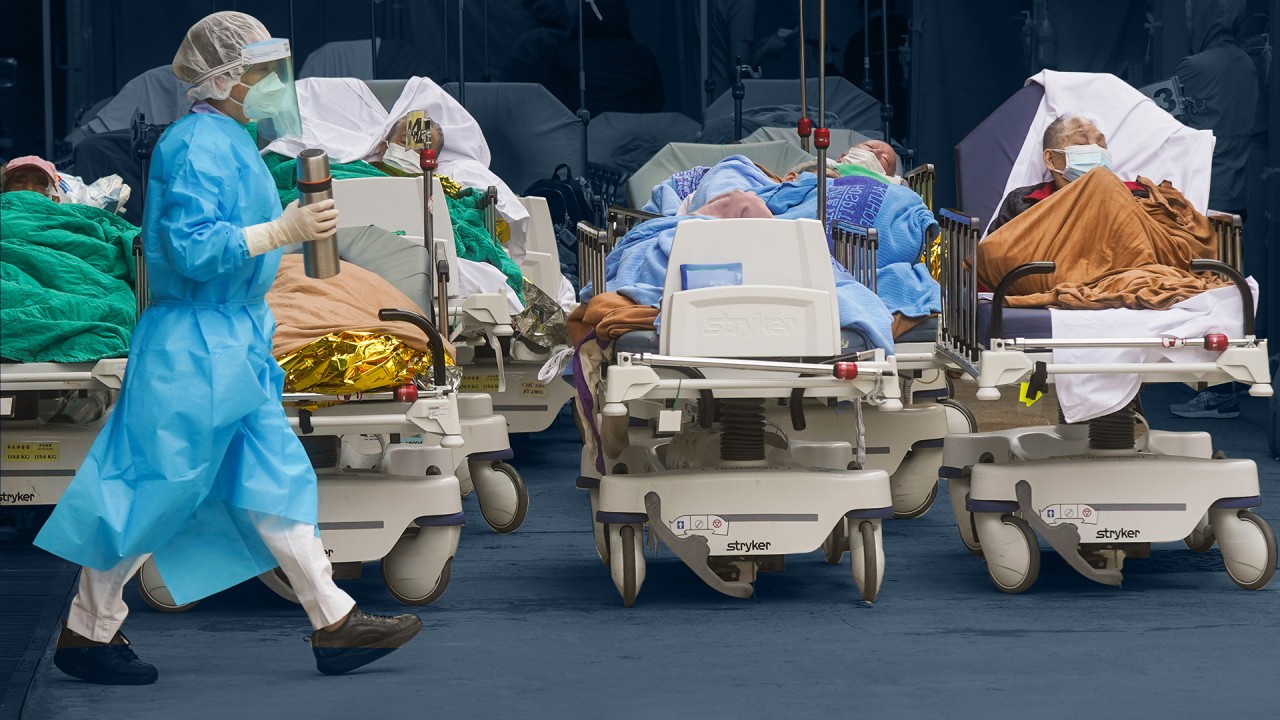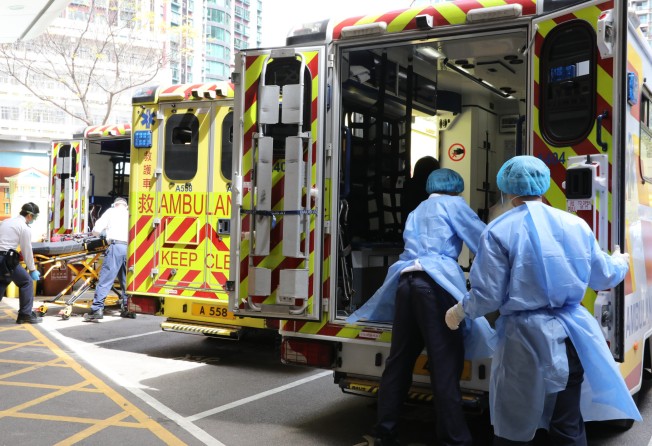
Hong Kong now has the world’s highest Covid-19 death rate. What happened, and how can this be fixed?
- Focus falls on elderly population, with calls for government to streamline procedures and channel resource to vulnerable, undervaccinated demographic
- But experts also caution against reading too much into the statistics, as other factors such as age segments and unaccounted infections should be considered

Deaths from Covid-19 complications in Hong Kong have been crossing the 100 mark daily over the past four days such that the city now has the world’s highest fatality rate for the coronavirus, mostly among undervaccinated elderly residents.
Authorities said they were funnelling more resources to senior patients, particularly those from care homes that had been ravaged by infections, but according to experts the measures were still too slow to come on stream and they warned that more grim statistics lay ahead.
They suggested instead that certain treatments such as intravenous medication could be performed directly in care homes, short-circuiting cumbersome rules that existed. Several also called on the government to speed up the process of sending elderly patients to temporary isolation or care facilities to lower cross-infection risks, as well as to vaccinate seniors who had not yet caught Covid-19.

According to database Our World in Data, the seven-day rolling average of Covid-19-related deaths per 1 million people in Hong Kong was 17.8, topping the global chart as of Thursday. Latvia came in second, with 10.71, and Georgia ranked third at 9.05.
Hong Kong’s rate based on this overall calculation was much higher than that of some developed nations.
For example, the mark in South Korea was 2.22, Singapore’s was 1.94, and Britain 1.67, although experts cautioned other factors such as an ageing population and low vaccination rates ought to be factored in. Doing so – such as breaking the figure down by age bands – could present a more accurate picture of fatalities.
On Friday, the city marked a third straight day with more than 50,000 Covid-19 cases, confirming 52,523 new infections and pushing the official tally to 403,080. Another 136 Covid-19 deaths were reported in the last 24 hours, with patients aged between 29 years and 102. Seventy-three of those who died came from care homes while 97 were unvaccinated.
The fatalities over 24 hours do not take into account those previously uncounted because of a backlog, but so far some 1,086 deaths have been announced between February 25 and March 4, reflecting the toll the fifth wave has taken on the population. The fatality count for the four previous Covid-19 waves combined was 213.
Officials on Friday also revealed more than 72 per cent of care homes in Hong Kong were experiencing outbreaks, with 9,800 residents – or 13 per cent of this demographic segment – and about 2,850 staff infected. Nearly 75,000 elderly and disabled people live in residential facilities in Hong Kong.
Elderly Commission chairman Dr Lam Ching-choi told the Post the real number of infections in such homes could be double what was indicated.
“Over 90 per cent of care homes in the city have at least one case of infection, while some care homes have seen all residents infected, according to my understanding,” Lam warned.
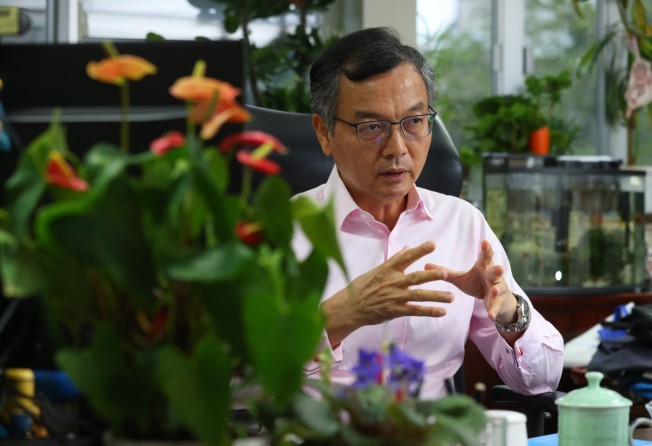
The surge in deaths of Hongkongers, especially the elderly, has become a focus of concern among visiting mainland experts and advisers.
Liang Wannian, leader of the National Health Commission’s Covid Response Expert Team, zeroed in on the subject, when he said the priority for Hong Kong was not just to reduce infections and serious cases but also cut down on deaths among the elderly, especially those in care homes.
He said analysis showed 94 per cent of some 800 Covid-19 deaths in Hong Kong were residents aged 60 or above, mostly from care facilities.
“We should establish a designated hospital for the treatment of Covid-19 patients, and give these severely and critically ill patients in this hospital the best resources, including our doctors and nurses,” Liang said in an interview with the pro-China Bauhinia magazine, adding that vaccination for the elderly should also be a focus.
“As long as the fatality rate is reduced, society and people’s hearts will feel more stable,” he said.
On reducing deaths among the elderly, Liang also drew comparisons with his time in mainland China’s Wuhan, where the outbreak was first reported in 2020, and said there were lessons for the city’s officials in this area.
He also identified strengthening cooperation between departments, indicating that “the crisis response mode of our leadership organisations” was very important.
“Our expert group has had a very strong feeling since we came here: Hong Kong’s fight against the fifth coronavirus wave is actually a people’s war that mobilises the whole society.”
Comparatively, the mainland has recorded 4,636 Covid-19 deaths out of its 1.4 billion population since the pandemic began in late 2019.
Zhang Yesui, spokesman for the National People’s Congress (NPC), the state’s top legislature, on Friday said China was “one of the best performers in curbing the pandemic”, and its “dynamic zero-Covid” approach had proved to be successful when considering infection numbers, fatalities and economic data.
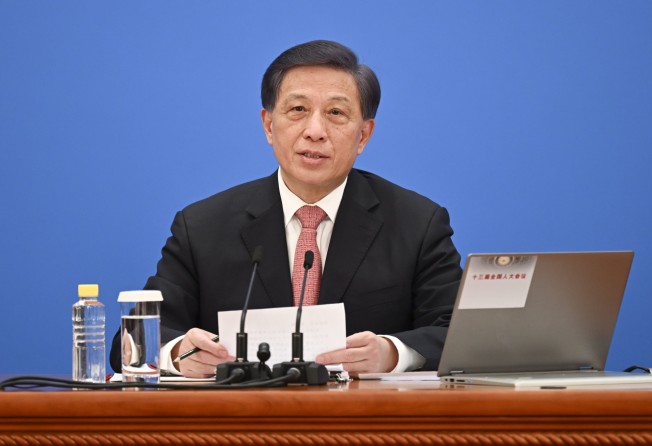
For almost a year, medical experts had warned that Hong Kong’s low vaccination take-up among the elderly was a ticking time bomb.
Though inoculation rates surged when the fifth wave emerged last December, with 90 per cent of residents having had their first jab as of Friday, just half of those aged 80 and older, and more than two-thirds of those between 70 and 80 years had received a first vaccine dose.
Compounding the problem, the city’s overwhelmed health care system had caused delays in the admission of elderly Covid-19 patients to hospitals or isolation facilities for treatment, leaving them to wait in their cramped care homes that became infection hotbeds.
Elderly Commission chairman Lam said: “Very unfortunately, the death rate among the elderly will continue to rise as we currently do not have enough resources – from hospital beds and isolation facilities to medication.”
He pointed out that care homes had to call emergency services and might wait days before their Covid-positive residents could get admission.
“This is very unsatisfactory as many old people failed to receive proper treatment on time,” he said. “Our system on prioritising patients definitely needs to be reorganised.”
Instead of only allowing hospital patients to get intravenous medication such as remdesivir, Lam suggested exemptions should be granted for stationed doctors and nurses to treat the sick directly in care homes.
As a member of the city leader’s de facto cabinet, Lam said they were also pushing for more isolation facilities for the elderly, among which was a 1,200-bed isolation and holding centre in Kai Tak Cruise Terminal, to be operational by mid-March at the earliest.
“But the problem we are facing is the lack of carers. We need at least 1,000 staff but even with help from the central government, the number of people is way below that,” he said.
Labour and welfare chief Law Chi-kwong on Friday said the new facility would also house those who had recovered but could not return home or to residential care facilities yet.
“This facility is important because it can alleviate the pressure on Hospital Authority beds, so hospitals can focus on patients with higher risks or who are in more serious condition,” he said.
Law added the first batch of carers would arrive from the mainland this week, although he stopped short of revealing their strength.
Government pandemic adviser Yuen Kwok-yung, a top University of Hong Kong (HKU) microbiologist, estimated that the death rate among the elderly “may still continue to rise for a week”.
“Hopefully it may slow down with the rapidly warming weather when our immune system may react less violently to the virus,” he told the Post.
Community geriatric assessment teams should also be allowed to give oral anti-Covid drugs to senior patients when sufficient amounts are available, according to Yuen.
Supporting the idea of treating patients in care homes, Dr Joseph Tsang Kay-yan, chairman of the Medical Association’s communicable diseases advisory committee, said authorities could set out guidelines on giving medication.
He also said it was possible for health care workers from the mainland to carry out this task.

On Hong Kong’s higher death rates, Professor Kwok Kin-on, a public health scholar from Chinese University, attributed the numbers to the city’s demographic structure.
“Hong Kong has an older population, and the vaccination rate among the elderly is not high. Those factors pushed up the death rate,” Kwok said.
He suggested a better indicator for international comparison would be the age-standardised mortality rate, which took the structure of age groups into account, rather than the overall death figures.
According to official statistics, Hong Kong has 1.31 million people who are aged 60 or above, accounting for around 18 per cent of its 7.4 million population.
HKU epidemiologist Benjamin Cowling said it could be premature to calculate the death risk on a per-infection basis as the fifth wave was still under way.
He said New York for example had a fatality rate per infection of 0.5 per cent, and peaked at 700 deaths per day in April 2020, but public health measures flattened the curve and the mark eventually dipped.
Clinical virologist Dr Siddharth Sridhar, also from HKU, said there was an “inherent uncertainty” in the actual death rate due to difficulty in setting a denominator. With a potentially larger denominator or the true number of infections in the community, the actual death rate could be lower.
He put the high rate in Hong Kong down to three factors: low elderly vaccination, low rates of prior infections in the population, meaning the death rate at this point in time could be high, and an overwhelmed public health care system.
As for what the city should do now, Sridhar said: “Keep pushing vaccination in the elderly. [We] need stockpiles of antivirals like remdesivir and paxlovid to reduce deaths among vulnerable populations in future waves.”
HKU’s Yuen on Thursday said the city had missed the best timing to make vaccination mandatory for the elderly.
He added on Friday that he believed authorities should still try and test everyone in care homes as soon as possible, and vaccinate those who were asymptomatic or who had tested negative in antigen screenings.
Professor Lau Yu-lung, also from HKU and a government adviser on vaccines, ramped up his call for vaccination even for elderly patients with symptoms.
“In the interest of public health, no one will first test someone before vaccinating them,” he said. “We can vaccinate them as long as they don’t have a fever, since all elderly people have coughs.”
To boost vaccination among the elderly, the government announced on Friday a shortening of the interval between the first and second doses for seniors, from 28 to 21 days for the Chinese-produced Sinovac shot.
Those aged 60 and above will also be able to book a booster shot three months after their second dose starting from Saturday, while this interval stands at six months for younger residents.
Unvaccinated Hongkongers who get infected can receive a jab as soon as four weeks from testing negative, while inoculated elderly who still catch Covid-19 can get their boosters three months after recovery.
Separately, the Food and Environmental Hygiene Department said all public wet markets would from Friday close an hour earlier at 7pm for thorough cleaning.
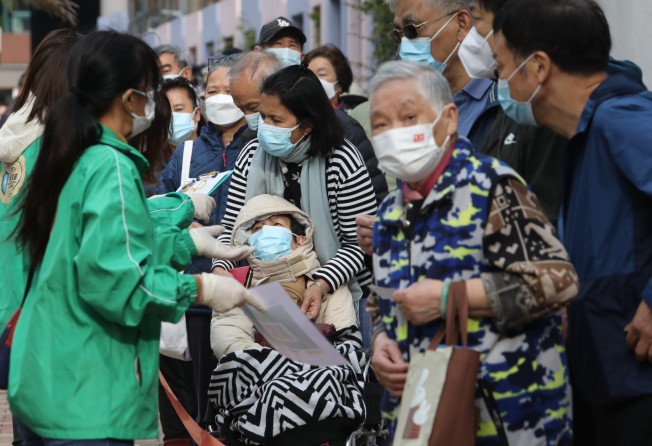
Meanwhile, China Railway Construction Group will hand over land to China State Construction International Holdings Limited by the end of the week for the next stage of development for a makeshift hospital at the Lok Ma Chau Loop.
Laputa Hung, commercial director of China Railway Construction, said the project had been immensely challenging but the site would soon have basic water and power supplies.
“Additional resources were deployed as we could not arrange manpower like usual. Planning, design and staffing arrangements had to happen on the go as we began construction,” he said.
Hong Kong and China Gas, known as Towngas, said it took a team of 200 working around the clock for four days to ensure gas supply.
The makeshift hospital is expected to provide 1,000 emergency beds and up to 10,000 isolation units.
The site belongs to the Lok Ma Chau Loop Innovation and Technology Park project, which is also operated by China Railway Construction.
Additional reporting by Victor Ting
